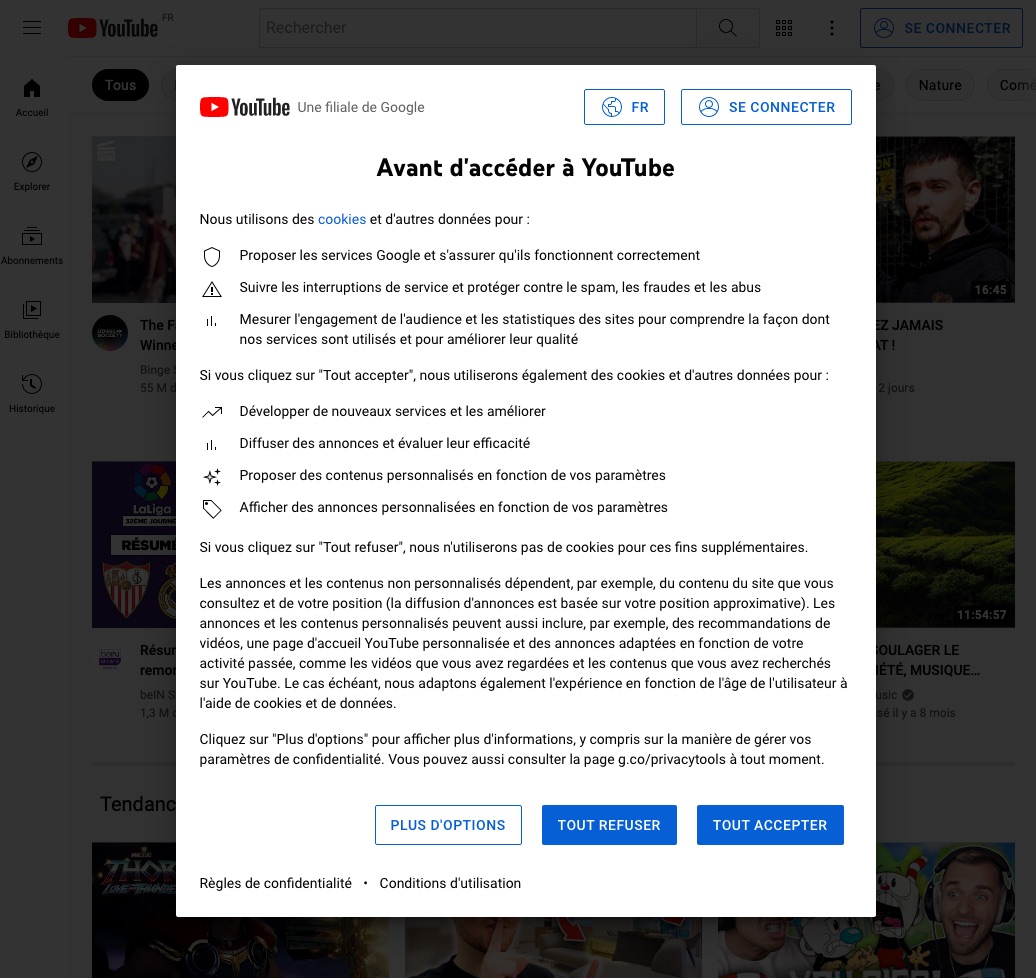Why have Google updated their cookie consent banner?

Google have recently confirmed their plans to update cookie consent choices to users around Europe.
Whilst Google say they have “changed the infrastructure we use to manage cookies,” this move was somewhat forced after receiving a €150 million fine from France’s data watchdog, CNIL, for breaching French law.
The data watchdog took swift action after they say Google failed to comply with current regulation when it comes to presenting tracking choices to users. This is often the “cookie pop-up” that allows user to either opt in or opt out to the use of cookies.
The change of cookie consent choices is currently being rolled out in France only, however, there are plans to roll out this change to the rest of Europe in the near future.
Following a statement from Google explaining their reasoning behind their change of cookie consent choices, they presented screenshots to show what the pop-ups will look like.

(Image credits: Google)
Initially the first screenshot provides users with two options: to either accept or customize cookies. These options will be familiar to users on not just Google but a number of other websites.
The second screenshot not only shows a change of wording for the buttons, but there is also a third button. If users do not wish to accept or customize their choice of cookies, they can now “Deny All” use of cookies with a single click.

(Image credits: Google)
The CNIL confirmed in their statement that a number of complaints they had received led to an investigation of Google an YouTube in 2021.
“The CNIL has received many complaints about the way cookies can be refused on the websites google.fr and youtube.com,” the CNIL wrote in a press release back in January. “In June 2021, the CNIL carried out an online investigation on these websites and found that, while they offer a button allowing immediate acceptance of cookies, the sites do not implement an equivalent solution (button or other) enabling the user to refuse the deposit of cookies equally easily. Several clicks are required to refuse all cookies, against a single one to accept them.”
In a response to CNIL’s statement, Google revealed their own statement as to the reasoning behind the changes in cookie consent options.
“Following conversations and in accordance with specific directives from the Commission nationale de l’informatique et des libertés (CNIL), we carried out a complete overhaul of our approach. In particular, we have changed the infrastructure we use to manage cookies,” Google wrote.



